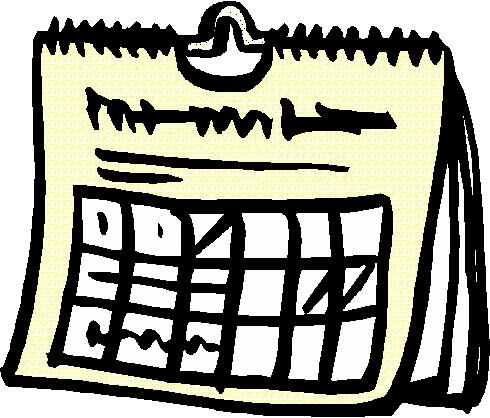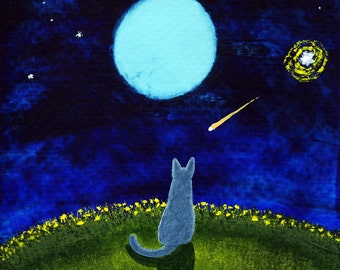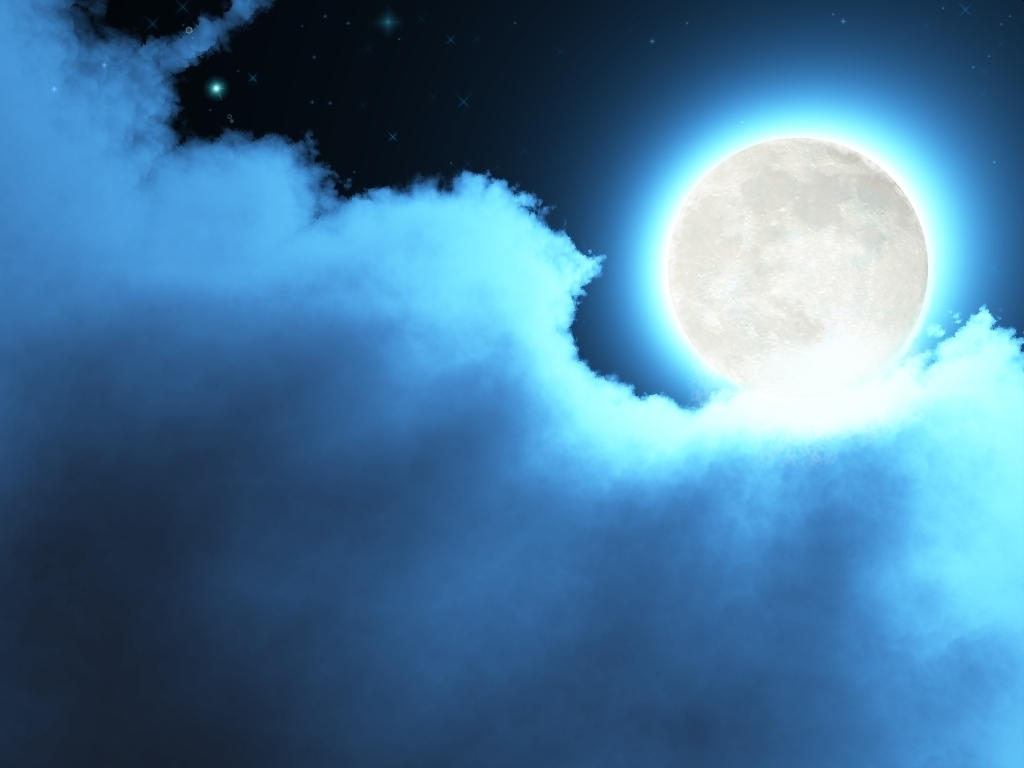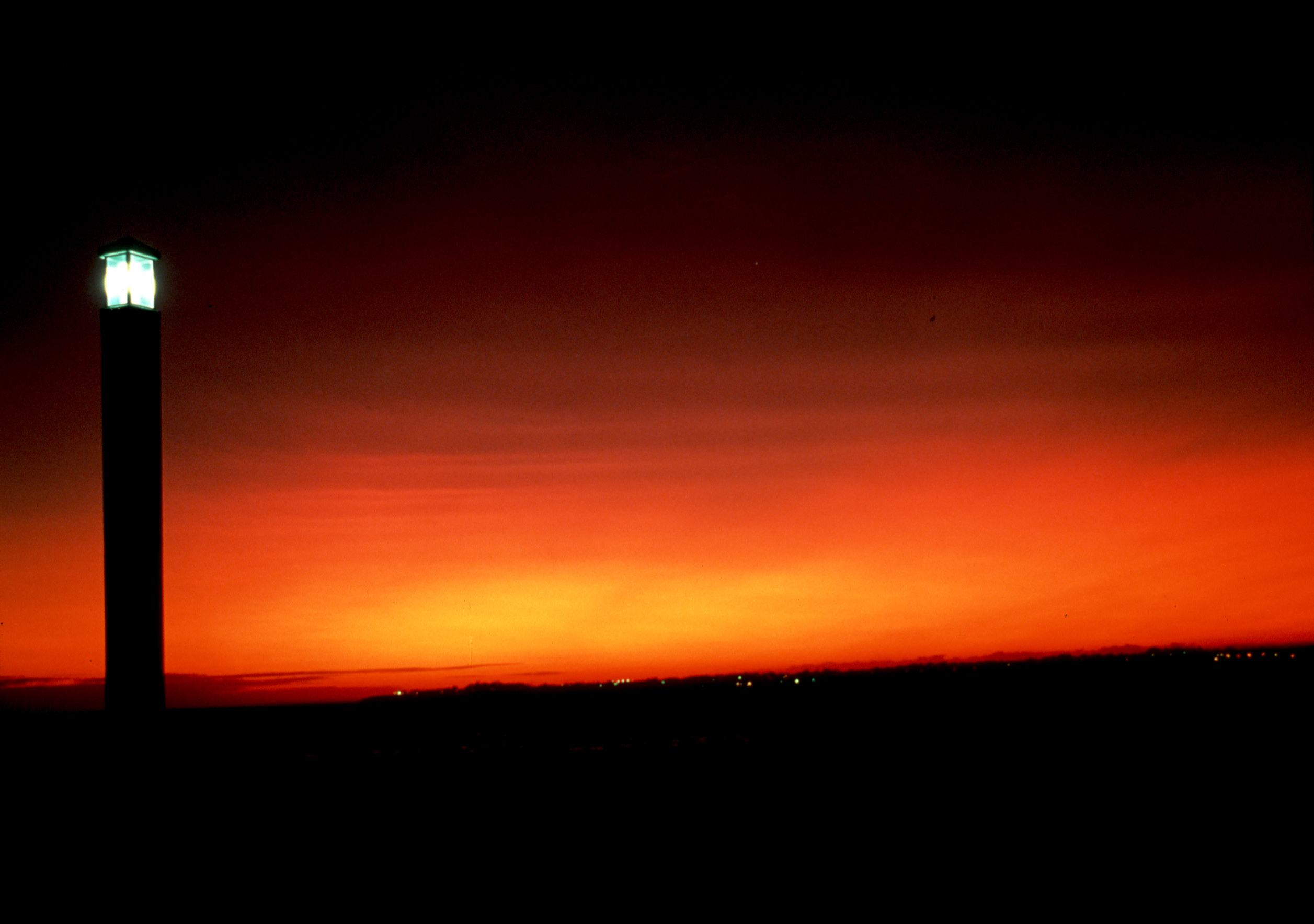Once in a blue moon by Avinash
There's mischief in the air, and in the sky
Rises fair, sublime, and rare - Blue Moon
~From "Once Upon a Blue Moon" by Andrea Dietrich
Once in a blue moon by Avinash
There's mischief in the air, and in the skyRises fair, sublime, and rare - Blue Moon
~From "Once Upon a Blue Moon" by Andrea Dietrich
MUCH ADO ABOUT BLUE
Where to begin. . .
 There is actually more than one definition for the term Blue Moon. The older one, appearing in early issues of the Maine Farmer's Almanac, was pretty complicated. It had to do with "tropical years," the timing of seasons, Christian calendars. . . It was confusing--even to astronomers!
There is actually more than one definition for the term Blue Moon. The older one, appearing in early issues of the Maine Farmer's Almanac, was pretty complicated. It had to do with "tropical years," the timing of seasons, Christian calendars. . . It was confusing--even to astronomers!Anyhoo, according to the Farmer's Almanac, a Blue Moon is the fourth full moon in a season that has three full moons. (The third moon of the season, not the fourth, is considered the Blue Moon. Say what??)
Why, you might ask, does anyone care that there is a fourth full moon in a season that already has three full moons?
In a nutshell, it messes everything up.
~which is a problem~
Many cultures throughout the world have given names to the 12 full moons; Native American tribes used moon phases to keep track of the seasons and gave each recurring full moon a unique name, which was used to identify the month in which it occurred. That 13th one, though. . . that was a head-scratcher. . .
The identities of the twelve moons was very important in the Christian ecclesiastical calendar, too, as I mentioned before. They also had names for 12 moons. The 13th, not so much.
 Then, in 1946, an astronomy writer by the name James Hugh Pruett came along. He tried to make sense of the Farmer's Almanac's complicated explanation of that 13th moon.
Then, in 1946, an astronomy writer by the name James Hugh Pruett came along. He tried to make sense of the Farmer's Almanac's complicated explanation of that 13th moon. In an act of pure inspiration, he decided to call it a Blue Moon (like in "Once in a Blue Moon," which is a phrase that means "rarely"), because it rarely happened. The term stuck! It served to identify the anomaly, and everyone pretty much breathed a sigh of relief. BRILLIANT!
OH, THOSE CALENDARS. . .
 Calendars are based on ordinary, observable natural events such as the sun's cycle through the seasons and the recurring phases of the moon. It's organized into 12 months. Very tidy.
Calendars are based on ordinary, observable natural events such as the sun's cycle through the seasons and the recurring phases of the moon. It's organized into 12 months. Very tidy.Seasons are determined by he equinoxes and solstices and not calendar months.
 It's possible for a calendar to have 12 full moons, one each month, yet have one season with four full moons instead of the typical three (which would equal 13 in all for that calendar year.)
It's possible for a calendar to have 12 full moons, one each month, yet have one season with four full moons instead of the typical three (which would equal 13 in all for that calendar year.) Hmm. . .. here's why: There's a full moon about every 29 days. (That's called a lunar month). Our calendar months consist of 30 or 31 days (except for February, of course.)
That's why the full moon doesn't happen on the same date every month and why there's sometimes an overlap of full moons within a single month.
FACT: The only month that will never have a blue moon is. . .
FACT: Because Blue Moons only come along every 2.7 years, we won't see another Blue Moon until January 31, 2018.
 FACT: Every 19 years or so, there's actually two Blue Moons in one calendar year -- in January and March. In order for this rare phenomenon to occur, it's necessary for February to have no full moons at all, which can happen since February has 28 days and the lunar calendar is 29.5 days.
FACT: Every 19 years or so, there's actually two Blue Moons in one calendar year -- in January and March. In order for this rare phenomenon to occur, it's necessary for February to have no full moons at all, which can happen since February has 28 days and the lunar calendar is 29.5 days. The last "double whammy" was in 1999.
~The next one? January & March of 2018~
~then not again until 2037~
Do Blue Moons really exist, you ask?
Yup. Sometimes.

For example: A volcano named Krakatoa erupted in 1883, spewing plumes of ash to the very top of the earth's atmosphere. Scientists say it was as powerful as a 100 megaton nuclear bomb!
Krakatoa's ash clouds were filled with tiny particles that blocked out some of the light from the moon. Moonbeams that were able to shine through the haze appeared blue.
A Blue Moon persisted for years after the eruption.
It also turned sunsets such a vivid red that people believed there was a massive conflagration (that means huge out-of-control fire), and fire engines were actually called out!
Heavy smoke from Wildfires will create the same effect.
TO REVIEW:
Blue moons may seem absurd. . .
Blue moons may seem absurd. . .
. . .But what else does the term "Once in a Blue Moon" mean?
It means rarely, like in. . .
Finally, and just because it's a cool song,
here is Blue Moon, performed by Beck.
(which, by the way, has absolutely nothing to do with
anything we were just talking about. . .)
(which, by the way, has absolutely nothing to do with
anything we were just talking about. . .)
You've got to admit,
a Blue Moon, even though most often not blue,
is a thing of love songs. Cue the music:
Gotta love the '50s. . .
Really confused guy Questioning guy Smurf dude Calendar Moons of many colors Volcano gif Blue moon friends gif
Cat/moon fold art Native American feather design DancingHobbes gif









